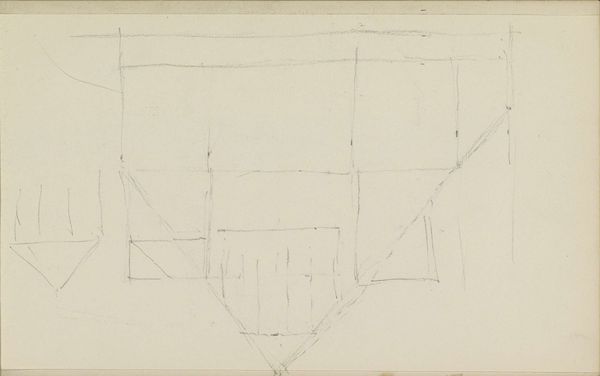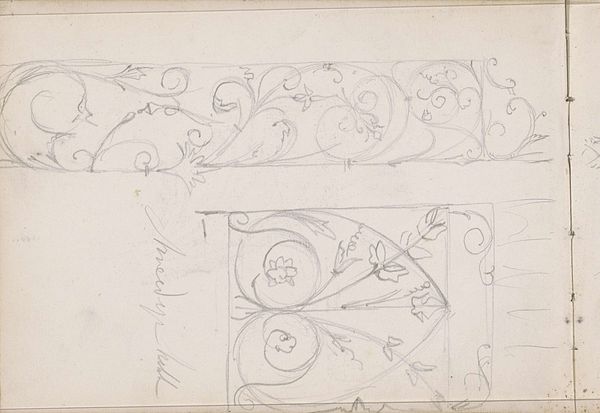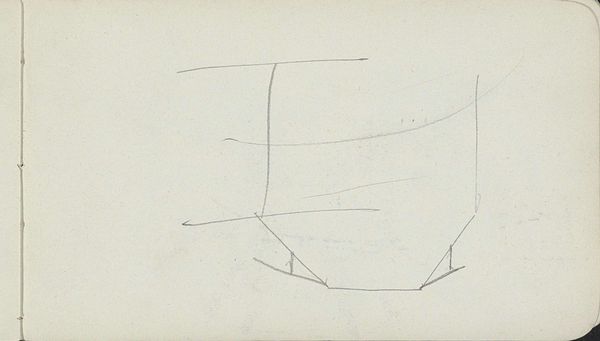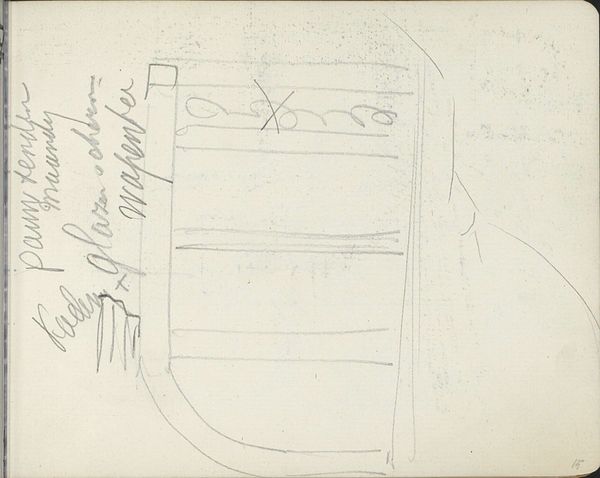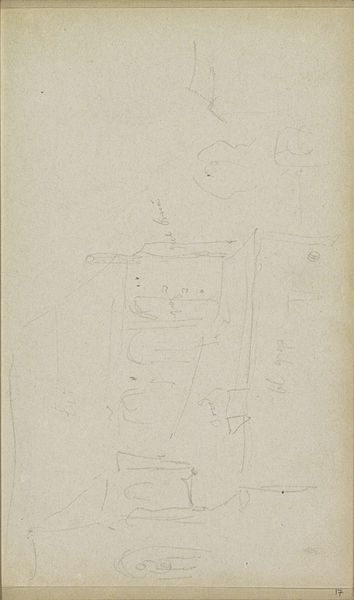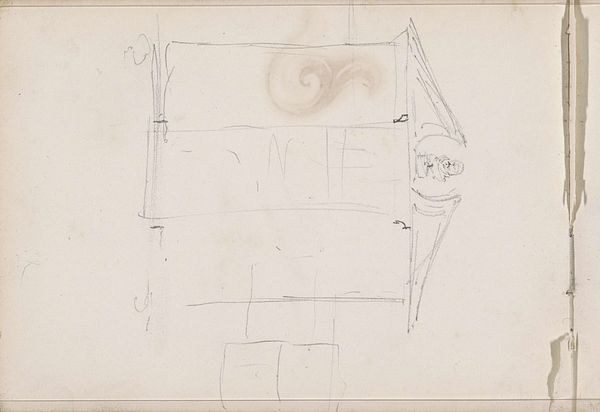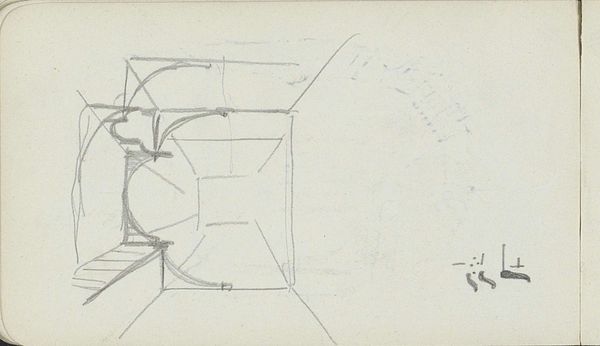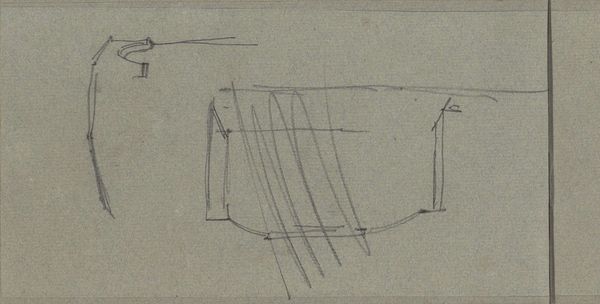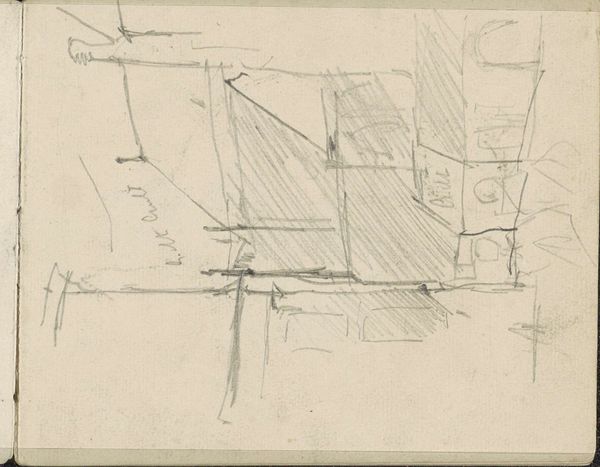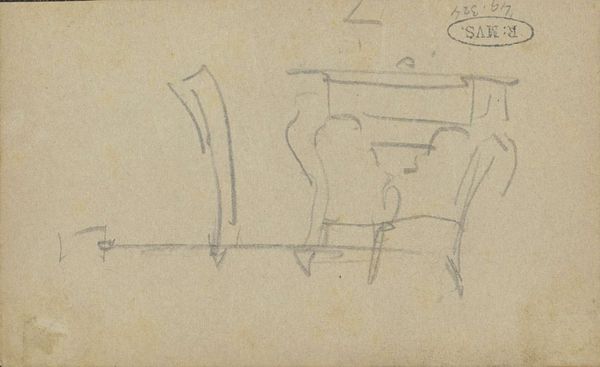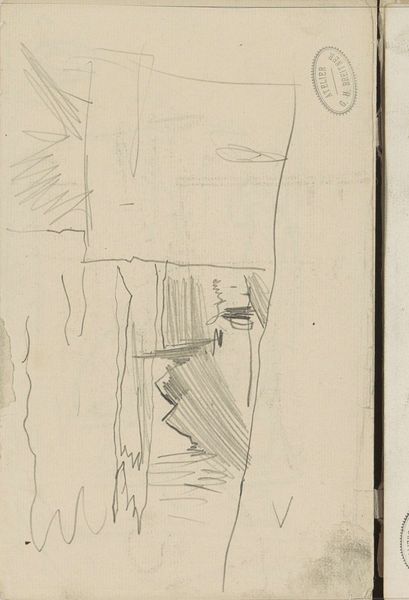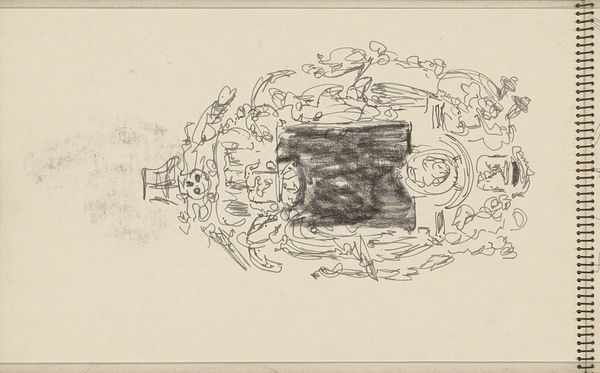
drawing, paper, pencil
#
drawing
#
aged paper
#
toned paper
#
ink paper printed
#
arts-&-crafts-movement
#
old engraving style
#
hand drawn type
#
paper
#
form
#
personal sketchbook
#
ink drawing experimentation
#
pen-ink sketch
#
pencil
#
line
#
sketchbook drawing
#
sketchbook art
Copyright: Rijks Museum: Open Domain
Curator: Here we have "Meubelstuk, vermoedelijk een gedecoreerd scherm," a pencil and ink drawing by Carel Adolph Lion Cachet, dating from around 1905 to 1906. It resides here at the Rijksmuseum. Editor: My first impression is the inherent ambiguity of this sketch, combined with its suggestion of refined ornamentation. Curator: Indeed, the composition invites semiotic exploration. Observe the structural arrangement—the compartmentalization achieved through vertical and horizontal lines creating distinct zones. How do you interpret these divisions? Editor: I see the divisions less as pure structure and more as indicating the potential steps of labor. A modular approach to craft, where different artisans might contribute to separate panels, fitting them together. What of the Arts and Crafts movement here? Curator: Precisely! It’s quite visible in the formal integration of design and craft. Cachet avoids pure ornamentation. The form anticipates its function, embedding itself in everyday life. Consider how each segmented area provides potential canvases for detailed artwork. Editor: It strikes me also, looking closer, how the sketch is about labor that never materialized fully. It speaks of intent but without realized material. It emphasizes the planning stage over the completed object itself. What would the screen be made out of? Who would build it? Curator: Those are key material questions! However, one can appreciate Cachet’s play with negative space— the paper, aged as it is, becomes a part of the image, allowing a complex relationship to emerge with the sketched form, offering balance between intention and suggestion. Editor: The choice of aged or toned paper enhances its connection to time and process. And how the looseness in sketch contrasts to formal expectations. Curator: It disrupts conventional notions of functionality through a semiotic presentation that evokes Arts and Crafts, inviting contemplation about labor in design. Editor: It's a reminder that craft includes social contexts. The drawing lets you imagine what a crafted object means for identity and its display. Curator: In summary, Cachet’s sketch reveals a rich interplay of intention and possibility, engaging in the formal visual vocabulary while evoking its socio-historical origins. Editor: A simple yet thoughtful meditation of craft as something beyond a physical entity—with its meaning wrapped in materials, process, labor, time, and place.
Comments
No comments
Be the first to comment and join the conversation on the ultimate creative platform.
